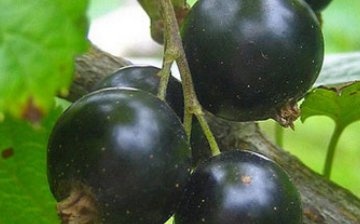Planting and caring for black currants
Black currant is very popular among gardeners because it is not only tasty, but also a medicinal plant. Planting and caring for black currants are not particularly difficult, and are quite accessible to a novice gardener. The landing site is chosen to be moderately humid, well-lit and protected from the wind. Often, bushes are planted along fences, stepping back from them by about 1 meter. The predecessors of the currants should not be the gooseberries and the currants themselves.
Planting can be done in the fall, at the end of September, or in the spring, no later than the beginning of May, until the buds have blossomed. Planting holes are dug to a depth of 40-45 cm and left for two weeks for the soil to settle well. Fertile soil mixed with humus and superphosphate is placed at the bottom of the pit. When planting a bush, the root collar is deepened by 5 centimeters, and the seedling is placed at about an angle of 45 degrees to the soil to form additional roots. Then the soil is compacted, watered and mulched with humus. All shoots should be cut so that no more than two buds remain on them, this contributes to the formation of a well-branched bush.
During dry periods, the plant should be watered. Planting and caring for black currants also means loosening, weeding and feeding. In autumn, potassium chloride and superphosphate are introduced under the bush, in early spring - nitrogen fertilizer and rotted manure with peat. During the flowering and fruiting period, liquid fertilizing from slurry or mullein infusion is also needed. A fruit-bearing bush must be watered, a lack of moisture in the fall can lead to freezing of the plant in winter.



